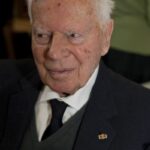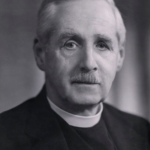Life and Work Movement
- Date of Founding
- Date of Abolition
- Location
In the history of 20th century Christian ecumenism, the Life and Work movement represents the attempt of Protestant, Anglican, Old Catholic and Orthodox churches to reach consensus on the practical role of ecumenical faith in society, as a counterpart to the Faith and Order Movement, which concerned itself with doctrinal issues. Life and Work began as the spiritual child of Swedish Lutheran Archbishop Nathan Söderblom with a preliminary conference held in 1920 in Geneva. At this meeting, Söderblom proposed the creation of an Ecumenical Council of the Churches, inspired by the League of Nations, to coordinate the churches work regarding social, ethical, and political questions. After a world conference in Stockholm in 1925 and the opening of an office in Geneva with a study department in 1928, the movement reconstituted itself as the Universal Christian Council for Life and Work, headed by presidents of four geographically distinct sections: American, British, continental European, and Orthodox for the Balkan, Eastern Mediterranean and Soviet lands.
Life and Works study department, headed by Hans Schönfeld, a German, and Nils Ehrenström, a Swede, organised study conferences throughout the 1930s on the most important question that European churches faced in light of the ascendant Nazi regimes claims of authority over the churches. This led to rifts within the German churches, which spilt over into the Life and Work movement as a whole. Under the leadership of J.H. Oldham, a world conference was therefore planned in Oxford in 1937, under the theme Church, State, and Community, which reaffirmed the necessity of the absolute independence of churches from secular governments interference. As a result, the German authorities forbade German church delegates to attend this conference. The intellectual output of Oxford would, however, become a cornerstone of ecumenical social thought for about two decades.
Life and Works formal end came in 1938 when it was merged with the Faith and Order movement into the World Council of Churches in process of formation.
Key events in the 1930s within the movement were conferences or council meetings in Rengsdorf (1933), Paris and Fanø (1934), Hemmen (1935), Chamby (1936), and Oxford (1937).



